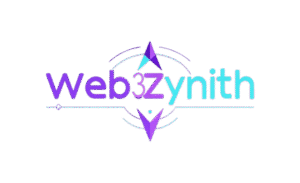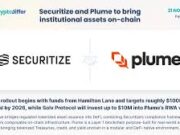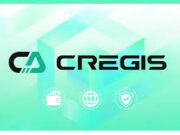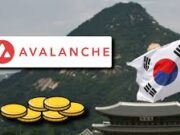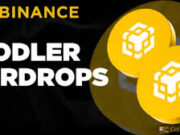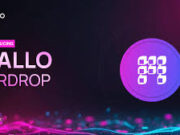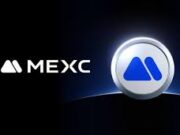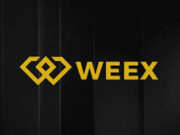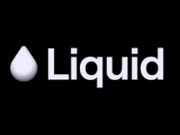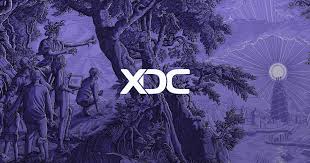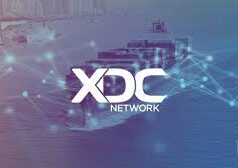The blockchain world just got a major upgrade. On August 26, 2025, the XDC Network, a Layer-1 blockchain built for global trade finance, announced its integration with Circle’s USDC stablecoin and Cross-Chain Transfer Protocol version 2 (CCTP V2). This move is a big deal for anyone interested in decentralized finance (DeFi), real-world asset (RWA) tokenization, or enterprise-grade blockchain solutions. By enabling native cross-chain transfers of USDC, XDC is paving the way for low-cost, efficient, and secure financial applications. Let’s break down what this integration means, how it works, and why it’s a game-changer for the blockchain ecosystem.
A New Era for XDC: Welcoming USDC
The XDC Network, launched in 2019, is designed to revolutionize trade finance and asset tokenization with its enterprise-grade, EVM-compatible blockchain. Its low-cost, high-throughput infrastructure—capable of 2,000 transactions per second—makes it a go-to for businesses looking to tokenize assets like invoices, bonds, or supply chain instruments. Now, with native USDC support, XDC users can leverage the world’s second-largest stablecoin, with a circulating supply of $58 billion, for seamless dollar-denominated transactions.coindesk, <:>
USDC, issued by Circle, is a fully reserved, dollar-pegged stablecoin known for its stability and regulatory compliance. Its integration into XDC means users can now conduct low-cost, high-speed transactions without leaving the ecosystem. For businesses, this opens doors to minting and redeeming USDC directly with Circle for fiat integration, streamlining cross-border payments and trade settlements. The addition of USDC is a nod to XDC’s growing role as a hub for institutional and DeFi applications.<:>
The Power of CCTP V2: Seamless Cross-Chain Transfers
The real magic of this integration lies in Circle’s Cross-Chain Transfer Protocol version 2 (CCTP V2). Unlike traditional bridging methods that rely on wrapped assets or liquidity pools, CCTP V2 enables native, 1:1 USDC transfers across blockchains like Ethereum, Avalanche, Base, and now XDC. This “burn-and-mint” process eliminates the need for synthetic assets, ensuring unified liquidity and reducing complexity for users.<:>,<:>
CCTP V2 introduces two key features: Fast Transfer and Hooks. Fast Transfer allows USDC to move between chains in seconds—faster than the source chain’s finality time—making it ideal for time-sensitive applications like trade settlements. Hooks, on the other hand, let developers automate post-transfer actions, such as depositing USDC into a DeFi vault or triggering a smart contract for invoice settlement. These features make XDC a playground for developers building innovative cross-chain apps.circle
For example, imagine a tokenized letter of credit on XDC. With CCTP V2, USDC can be transferred from Ethereum, automatically triggering a smart contract to settle the transaction—all in seconds. This level of interoperability is a massive step toward bridging traditional finance and Web3.<:>
Boosting Enterprise Adoption: Low-Cost, High-Efficiency Solutions
XDC’s integration of USDC and CCTP V2 is tailor-made for enterprise use cases. The network’s focus on trade finance and RWA tokenization aligns perfectly with USDC’s stability. Businesses can now settle high-value transactions, like tokenized debt or supply chain contracts, using USDC without leaving the XDC ecosystem. The low gas fees—often a fraction of Ethereum’s—make it cost-effective for institutions to adopt blockchain for B2B and cross-border payments.<:>,<:>
The integration also supports XDC’s ecosystem of over 175 apps and protocols. From decentralized supply chain management to AI-driven blockchain applications, XDC’s EVM compatibility ensures developers can easily build or port tools from other chains. With USDC’s liquidity and CCTP V2’s interoperability, enterprises can create seamless workflows, such as real-time trade settlements or treasury management, without the friction of traditional financial systems.<:>,<:>
This is particularly exciting for industries like trade finance, where delays and high costs are common pain points. XDC’s infrastructure, combined with USDC’s reliability, offers a solution that’s fast, secure, and scalable—perfect for tokenized invoices or letters of credit.<:>
Enhancing DeFi: Liquidity and Composability
DeFi developers should be just as excited about this integration. USDC’s presence on XDC boosts liquidity, making it easier to build decentralized apps for trading, lending, or asset management. CCTP V2’s Hooks allow for creative composability—think automated swaps, cross-chain lending, or even NFT purchases settled in USDC. By eliminating the need for liquidity reserves, CCTP V2 ensures virtually unlimited transfer sizes, a boon for DeFi protocols handling large transactions.<:>,<:>
XSwap Protocol, for instance, has already integrated Circle’s bridged USDC standard on XDC, enabling seamless transfers between XDC, Ethereum, and Arbitrum. This permissionless, on-chain utility uses a lock-and-mint process to maintain 1:1 correspondence, ensuring capital efficiency. As XDC plans to evolve its bridging technology, we can expect even smoother cross-chain interactions.<:>
For DeFi users, this means more opportunities to leverage XDC’s low fees and high throughput. Whether you’re a trader swapping assets or a protocol managing treasury funds, USDC on XDC simplifies operations while keeping costs down.
The Technical Edge: XDC 2.0 and Beyond
This integration comes on the heels of XDC’s 2.0 consensus upgrade, rolled out in Q3 2025. The upgrade introduced military beheld military-grade security, forensic monitoring, and subnet architecture, making XDC one of the most secure and reliable networks for enterprise use. The USDC and CCTP V2 integration builds on this foundation, enhancing XDC’s cross-chain capabilities and positioning it as a leader in interoperable blockchain solutions.<:>,<:>
XDC Zero, a key component of XDC 2.0, supports cross-chain interoperability for both the mainnet and subnets, ensuring robust performance even during network stress. This technical prowess makes XDC an ideal platform for USDC’s high-speed, secure transfers.<:>
Navigating the Risks: What to Consider
While the integration is promising, it’s not without risks. Crypto markets are volatile, and even stablecoins like USDC can face regulatory scrutiny. Users must trust Circle’s validation process for CCTP transfers, which, while minimal, introduces a trust assumption. Additionally, developers integrating CCTP V2 must adapt to new smart contracts and APIs, as it’s not backward compatible with CCTP V1.<:>
Enterprises and developers should also consider XDC’s regulatory landscape. While the network emphasizes compliance, global regulations around stablecoins and blockchain vary widely. Staying informed about local laws is crucial to avoid potential roadblocks.
The Road Ahead: XDC’s Growing Influence
This integration solidifies XDC’s position as a powerhouse in trade finance and DeFi. The addition of USDC and CCTP V2 aligns with XDC’s rumored ETF ambitions in Q4 2025, signaling its intent to bridge traditional finance and blockchain. The network’s partnerships, like the one with LayerZero’s Stargate Finance for zero-slippage bridges, further enhance its cross-chain capabilities.coinmarketcap
As more blockchains adopt CCTP V2—Solana and others are planned for 2025—XDC’s role in the multi-chain ecosystem will grow. The network’s focus on real-world use cases, combined with USDC’s liquidity, could drive mainstream adoption of blockchain for financial applications.faisalkhan
A Bridge to the Future
The integration of USDC and CCTP V2 on XDC isn’t just a technical upgrade—it’s a step toward a more connected, efficient, and accessible financial system. For businesses, it means faster, cheaper transactions. For developers, it’s a chance to build innovative cross-chain apps. And for the blockchain ecosystem, it’s a move toward unifying liquidity and simplifying user experiences.
If you’re a developer, enterprise, or investor, now’s the time to explore XDC’s ecosystem. With USDC’s stability, CCTP V2’s speed, and XDC’s enterprise-grade infrastructure, the possibilities are endless. Head to the XDC Network or Circle’s developer portal to get started, and join the conversation on their Discord communities for the latest updates.circle
Sources:
- Circle’s Official Announcement on USDC and CCTP V2 Integrationcircle
- XDC Network’s Official Websitexdc
- CoinDesk on CCTP V2 Upgradescoindesk
- Crypto Economy on XDC and Circle Collaboration<:>
- XDC Network Docs on Technical Specifications<:>
